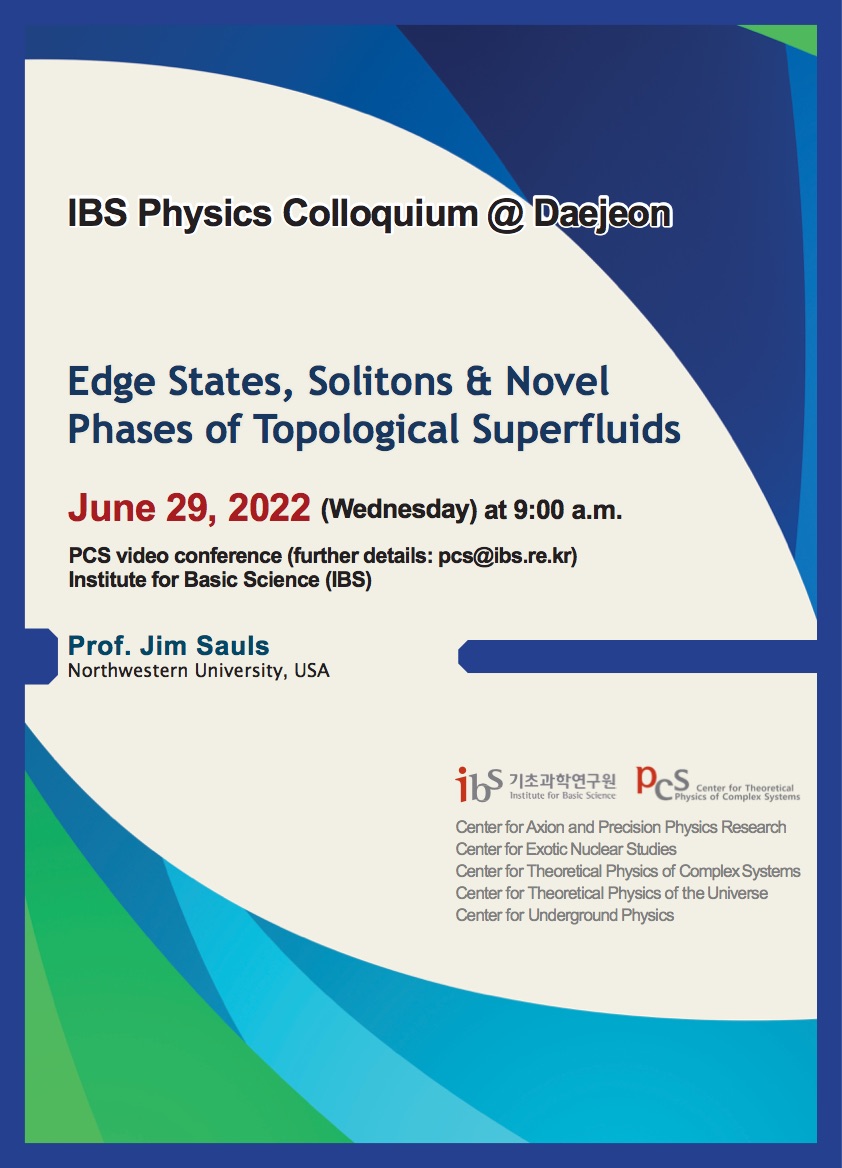Activities

-
edge states, solitons & novel phases of topological superfluids
Jim Sauls
Northwestern University, USA
29 June 2022 Wed 9 am






IBS Center for Theoretical Physics of Complex Systems (PCS), Administrative Office (B349), Theory Wing, 3rd floor
Expo-ro 55, Yuseong-gu, Daejeon, South Korea, 34126 Tel: +82-42-878-8633
Under a wide range of conditions the vacuum state of liquid 3He is a condensate of chiral p- wave molecular pairs of 3He atoms which spontaneously break mirror and time-reversal symmetries. Broken symmetries in topological condensed matter systems have implications for the spectrum of Fermionic excitations confined on surfaces or topological defects. The Fermionic spectrum of confined (quasi-2D) 3He-A consists of branches of chiral edge states. The negative energy states are related to the ground-state angular momentum, Lz = (N/2) ̄h, for N/2 Cooper pairs. The power law suppression of the angular momentum, Lz(T) ≃ (N/2) ̄h[1−2/3(πT/∆)2] for 0 ≤ T ≪ Tc, in the fully gapped 2D chiral A-phase reflects the thermal excitation of the chiral edge Fermions. I discuss the effects of wave function overlap, and hybridization between edge states confined near opposing surfaces on the edge currents, ground-state angular momentum and ground-state order parameter. Under strong lateral confinement, the chiral A phase undergoes a sequence of phase transitions, first to a pair density wave (PDW) phase with broken translational symmetry at Dc2 ∼ 16ξ0. The PDW phase is a periodic array of chiral domains with alternating chirality, separated by domain walls. The period of PDW phase diverges as the confinement length D → Dc2 . The PDW phase breaks time-reversal symmetry, translation invariance, but is invariant under the combination of time-reversal and translation by a one-half period of the PDW. The mass current distribution of the PDW phase reflects this combined symmetry, and orignates from the spectra of edge Fermions and the chiral branches bound to the domain walls.
Research conducted in collaboration with Hao Wu and Jason He supported by NSF grant DMR- 1508730 and the Center for Applied Physics and Superconducting Technologies.










